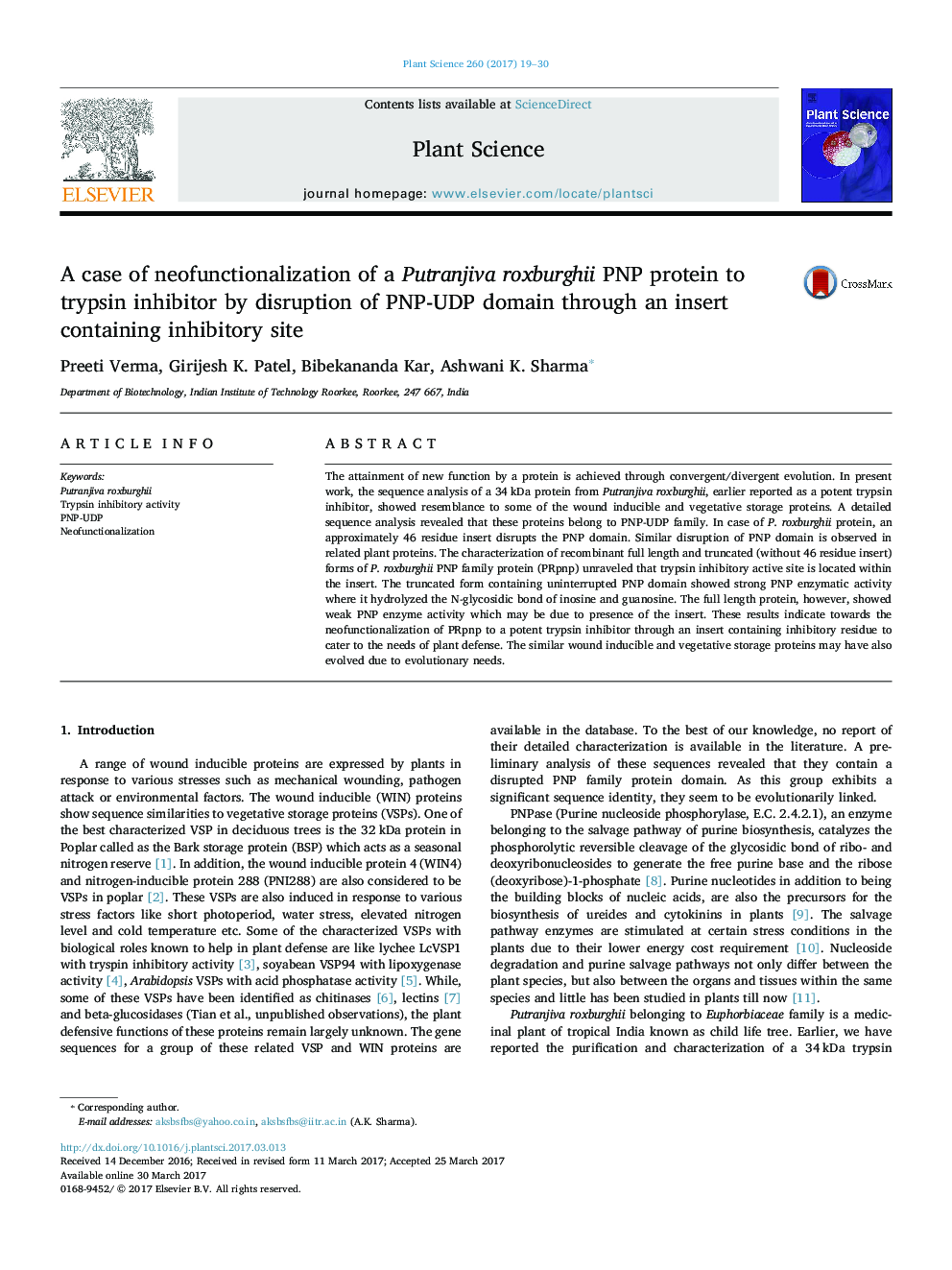| Article ID | Journal | Published Year | Pages | File Type |
|---|---|---|---|---|
| 5515695 | Plant Science | 2017 | 12 Pages |
â¢A 34 kDa protein with trypsin inhibitory activity was cloned from P. roxburghii.â¢It belongs to PNP-UDP family with a 46 residue insert containing trypsin inhibitory active site disrupting the PNP domain.â¢Protein without insert lacked trypsin inhibitory activity but showed strong PNP activity.â¢Evolutionary linked to plant bark storage and wound-inducible proteins.â¢It indicates the neofunctionalization of a PNP family protein to trypsin inhibitor..
The attainment of new function by a protein is achieved through convergent/divergent evolution. In present work, the sequence analysis of a 34Â kDa protein from Putranjiva roxburghii, earlier reported as a potent trypsin inhibitor, showed resemblance to some of the wound inducible and vegetative storage proteins. A detailed sequence analysis revealed that these proteins belong to PNP-UDP family. In case of P. roxburghii protein, an approximately 46 residue insert disrupts the PNP domain. Similar disruption of PNP domain is observed in related plant proteins. The characterization of recombinant full length and truncated (without 46 residue insert) forms of P. roxburghii PNP family protein (PRpnp) unraveled that trypsin inhibitory active site is located within the insert. The truncated form containing uninterrupted PNP domain showed strong PNP enzymatic activity where it hydrolyzed the N-glycosidic bond of inosine and guanosine. The full length protein, however, showed weak PNP enzyme activity which may be due to presence of the insert. These results indicate towards the neofunctionalization of PRpnp to a potent trypsin inhibitor through an insert containing inhibitory residue to cater to the needs of plant defense. The similar wound inducible and vegetative storage proteins may have also evolved due to evolutionary needs.
Graphical abstractDownload high-res image (264KB)Download full-size image
